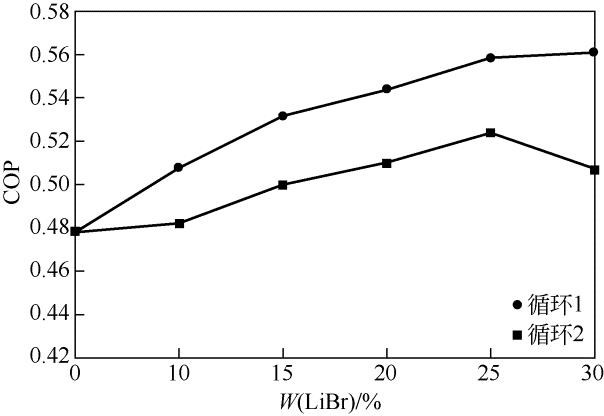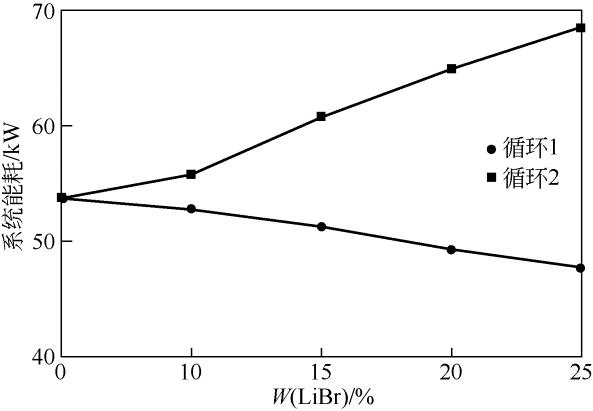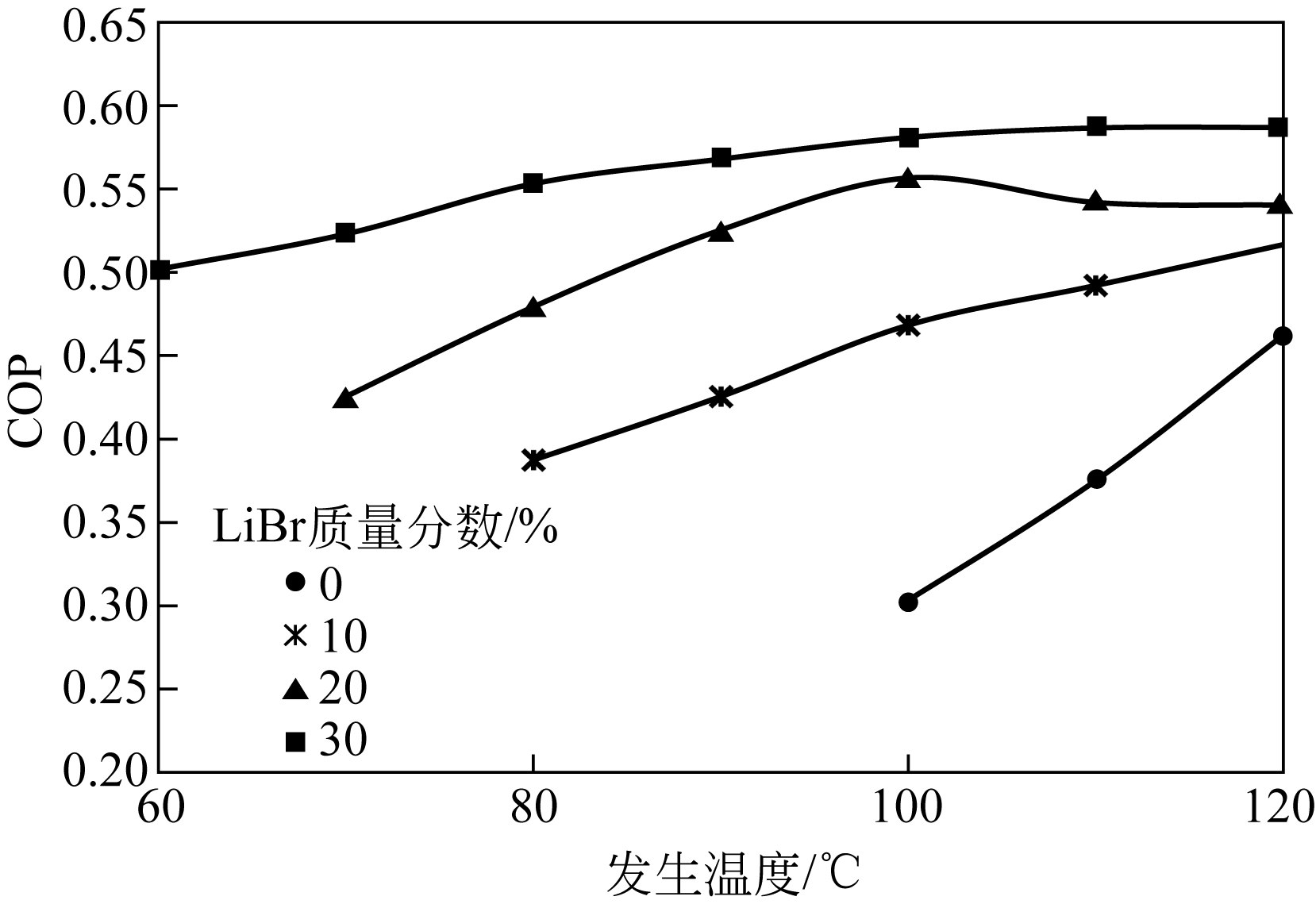| 1 |
贾炯, 王辉涛, 刘泛函, 等 . 基于R124/DMAC为工质的压缩吸收式制冷系统的性能分析[J]. 化工进展, 2017, 36(7): 2436-2442.
|
|
JIA Jiong , WANG Huitao , LIU Fanhan , et al . Performance study of compressive energy absorption refrigeration system based on R124/DMAC mixture[J]. Chemical Industry and Engineering Progress, 2017, 36(7): 2436-2442.
|
| 2 |
IBRAHIM O M , BARNET S M , BALAMURU V G . Improving the performance of ammonia-water absorption cycles using salt additives and membranes [J]. ASHRAE Transactions, 1997, 103(1): 439-443.
|
| 3 |
FOOTE H W . Equilibrium in the system ammonia-water-ammonium thiocyanate [J]. Journal of the American Chemical Society, 1921, 43(5): 1031-1038.
|
| 4 |
DAVIS R O E , OLMSTEAD L B , LANDSURM F O J . Vapor pressure of lithium nitrate ammonia system [J]. Journal of the American Chemical Society, 1921, 43(7): 1575-1580.
|
| 5 |
AHLBY L , HODGETT D , RADERMACHER R . NH3/H2O-LiBr as working fluid for the compression/absorption cycle[J]. International Journal of Refrigeration, 1993, 16(4): 265-273.
|
| 6 |
PETERS R , GREB O , KORINTH C , et al . Vapor-liquid equilibria in the system NH3+H2O+LiBr. 1. Measurements at T=303~423K and P=0.1~1.5MPa [J]. J. Chem. Eng. Data, 1995, 40: 769-774.
|
| 7 |
WU Tiehui , WU Yuyuan , YU Zhiqiang , et al . Experimental investigation on an ammonia-water-lithium bromide absorption refrigeration system without solution pump [J]. Energy Conversion and Management, 2011, 52: 2314-2319.
|
| 8 |
Simona STEIU , Daniel SALAVERA , BRUNO Joan Carles, et al . A basis for the development of new ammonia–water–sodium hydroxide absorption chillers[J]. International Journal of Refrigeration, 2009, 32: 577-587.
|
| 9 |
ORTIZ J M , SOTOCA J A , EXPOSITO E , et al . Brackish water desalination by electrodialysis: batch recirculation operation modeling [J]. Journal of Membrane Science, 2005, 252: 65-75.
|
| 10 |
MOHAMMADI T , KAVIANI A . Water shortage and seawater desalination by electrodialysis[J]. Desalination, 2003, 158: 267-270.
|
| 11 |
陈霞, 蒋晨啸, 汪耀明, 等 . 反向电渗析 (RED) 在新能源及环境保护应用中的研究进展[J]. 化工学报, 2017, 69(1): 1-12.
|
|
CHEN Xia , JIANG Chenxiao , WANG Yaoming , et al . Advances in reverse electrodialysis and its applications on renewable energy & environment protection [J]. CIESC Journal, 2017, 69(1): 1-12.
|
| 12 |
时钧, 袁权, 高从堦 . 膜技术手册[M]. 北京:化学工业出版社, 2001:438-442.
|
|
SHI Jun , YUAN Quan , GAO Congjie . Membrane technology handbook[M].Beijing:Chemical Industry Press, 2001: 438-442.
|
| 13 |
张维润 . 电渗析工程学[M]. 北京: 科学出版社, 1995:247-270.
|
|
ZHANG Weirun . Electrodialysis engineering[M]. Beijing:Science Press, 1995: 247-270.
|
| 14 |
曹连城, 吴文珊 . 电渗析极限电流的测定及与水型水温的关系[J]. 湖北化工学报, 1999, 16(3):1-4.
|
|
CAO Liancheng , WU Wenshan . Determination of ultimate current of electrodialysis and its relationship with water temperature [J]. Hubei Chemical Industry, 1999, 16(3): 1-4.
|
| 15 |
MANSOURI R , BOUKHOLDA I , BOUROUIS M , et al . Modeling and testing the performance of a commercial ammonia/water absorption chiller using Aspen-Plus platform[J]. Energy, 2015, 93: 2374-2383.
|
| 16 |
LIANG Yuanyuan , LI Shuhong , YUE Xiaoyang , et al . Analysis of NH3-H2O-LiBr absorption refrigeration integrated with an electrodialysis device[J]. Applied Thermal Engineering, 2017, 115: 134-140.
|
| 17 |
林子雄, 鄢烈祥, 李骁淳, 等 . 基于流程模拟器和列队竞争算法的精馏操作优化[J]. 化工进展, 2013, 32(1): 54-58.
|
|
LIN Zixiong , YAN Liexiang , LI Xiaochun , et al . Distillation process operation optimization based on process simulator and the line-up competition algorithm[J]. Chemical Industry and Engineering Progress, 2013, 32(1): 54-58.
|
 ),Shuhong LI(
),Shuhong LI( ),Mengkai XU,Yanjun LI,Kai DU,Liu YANG
),Mengkai XU,Yanjun LI,Kai DU,Liu YANG




